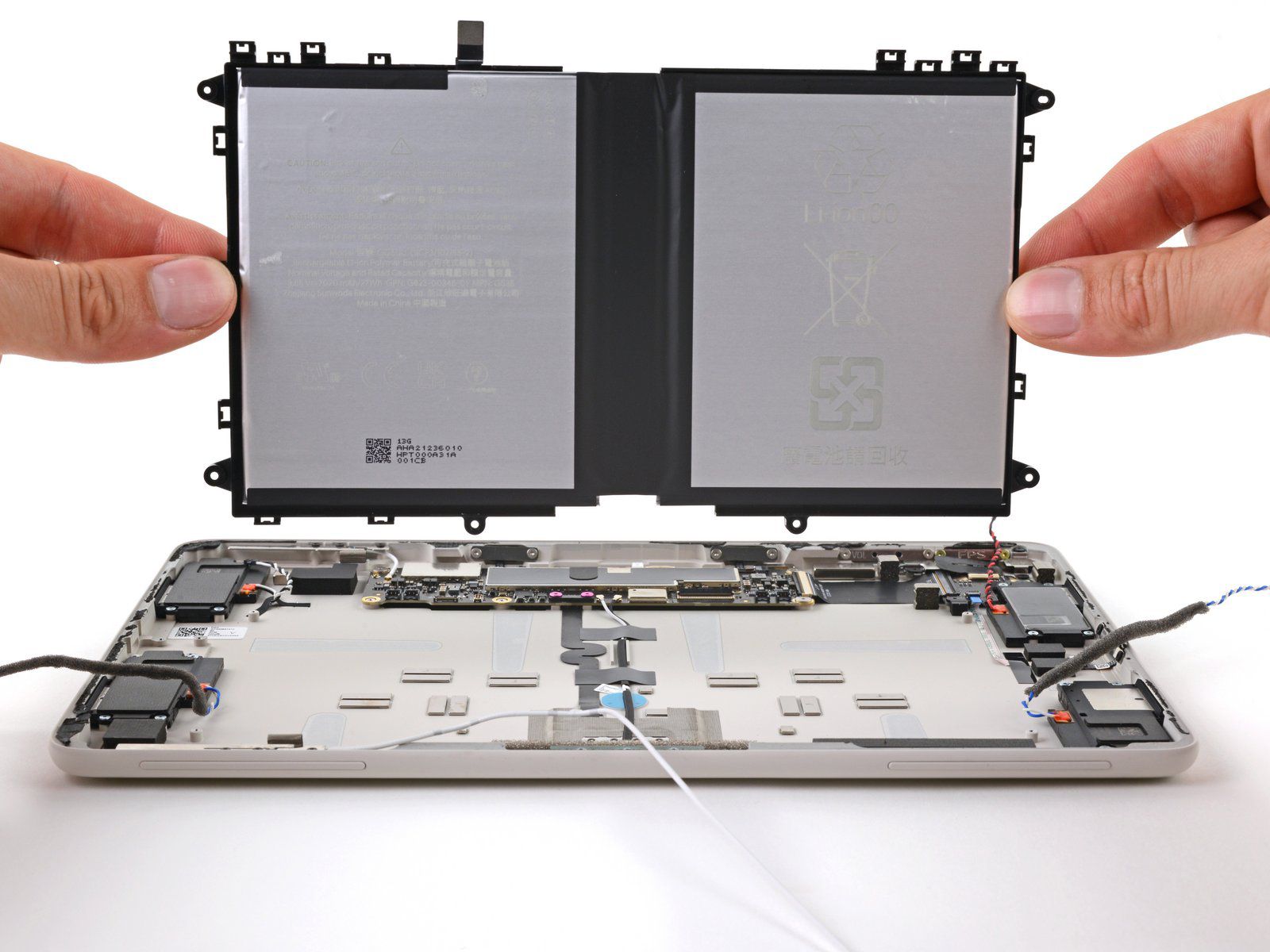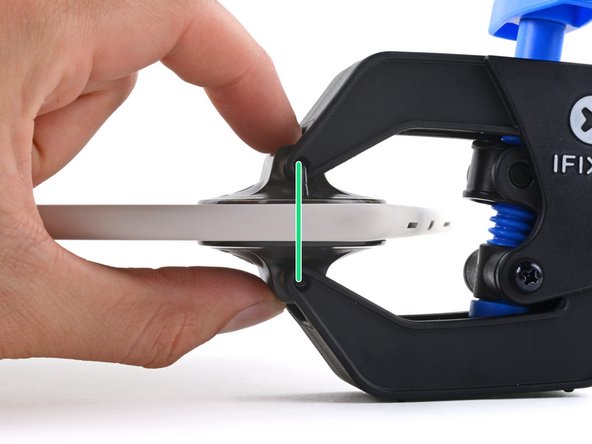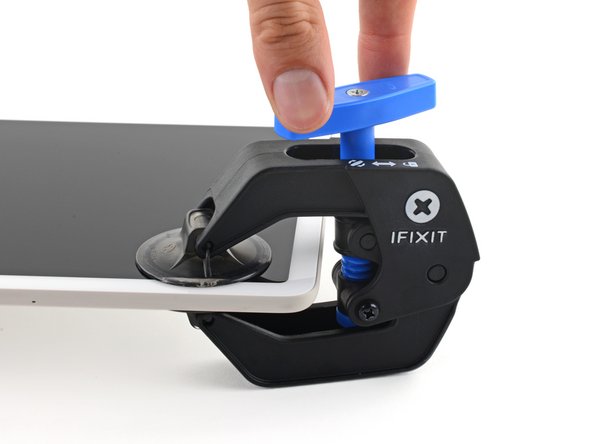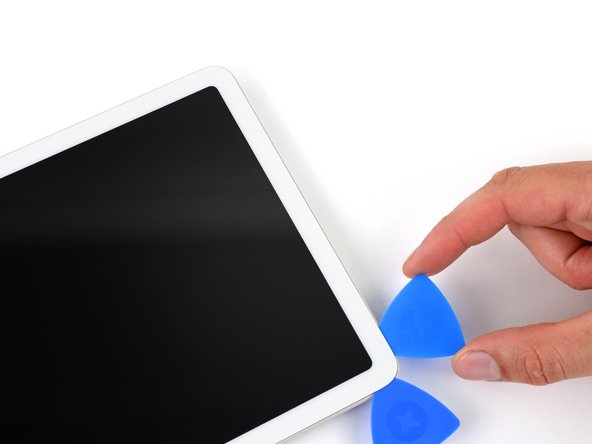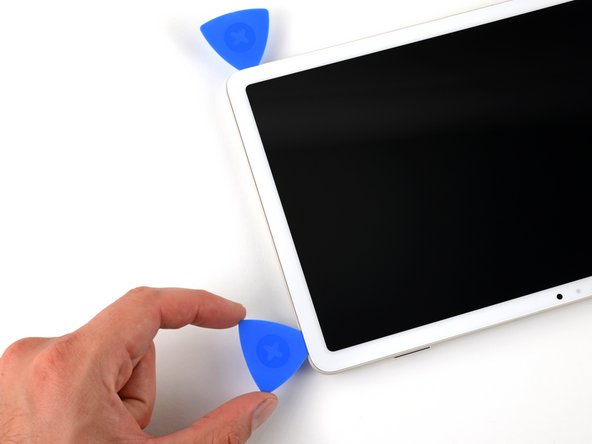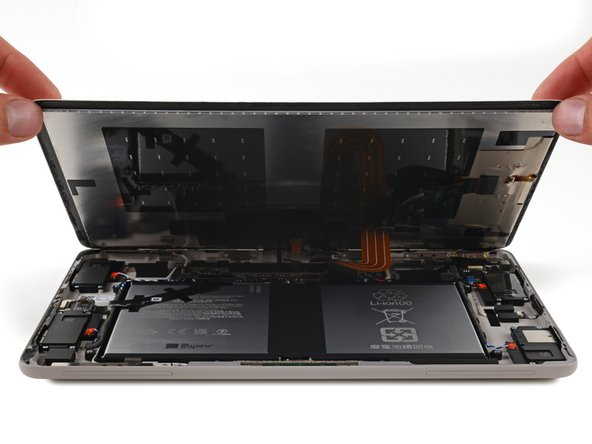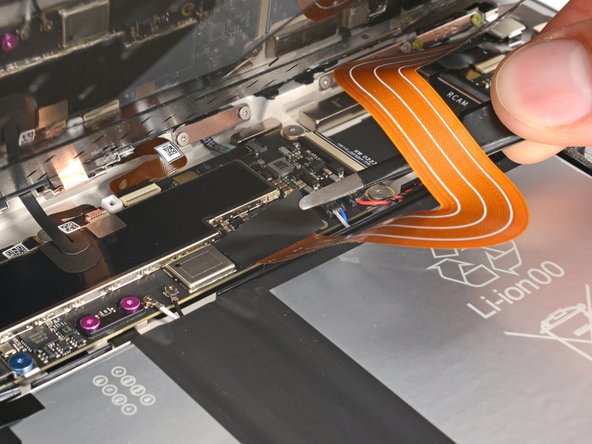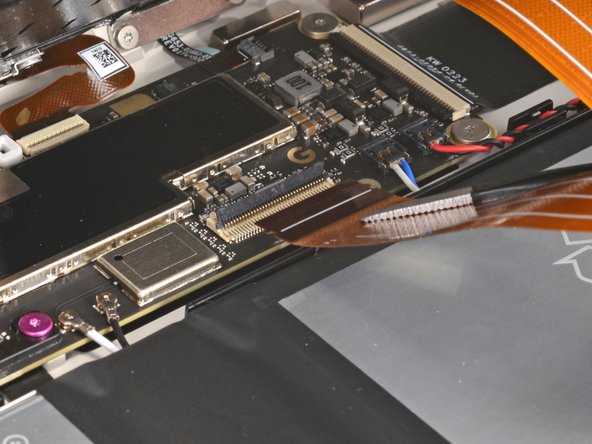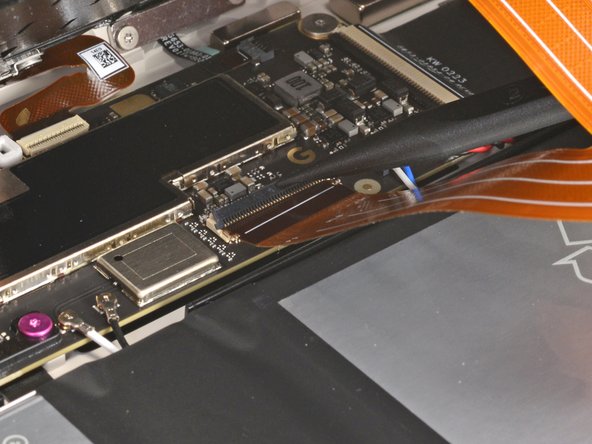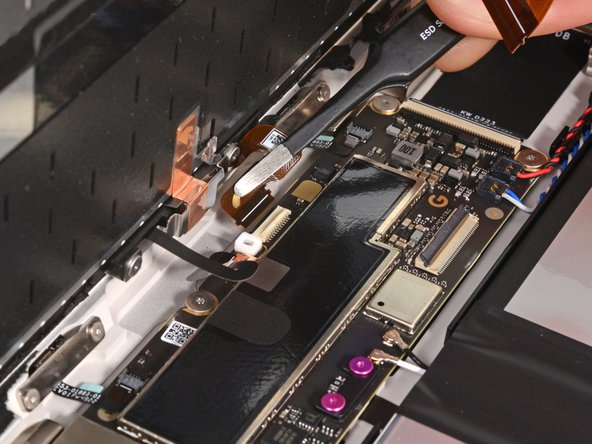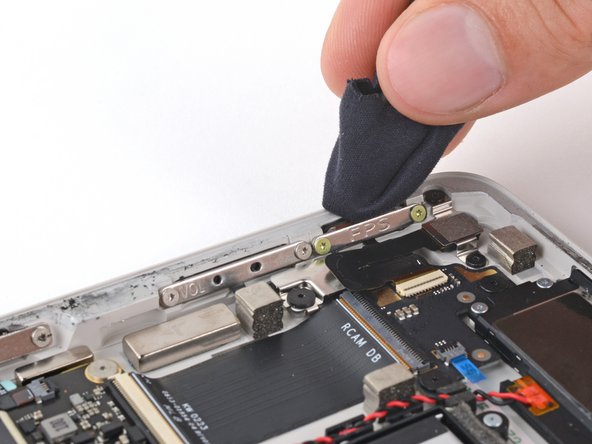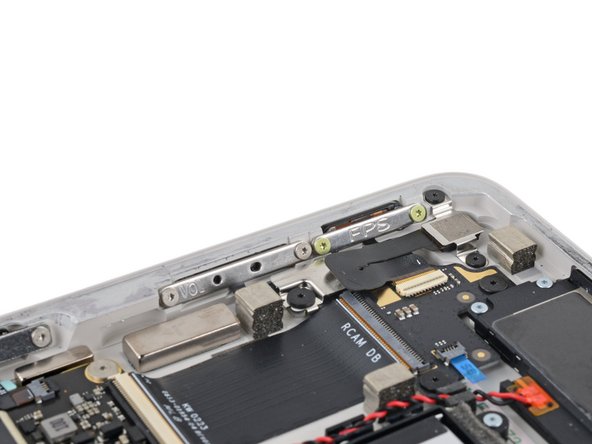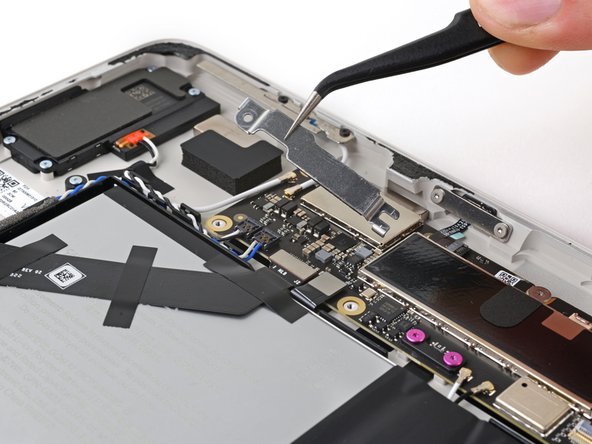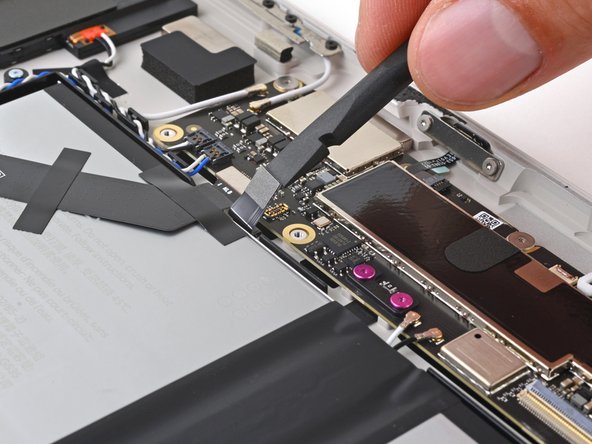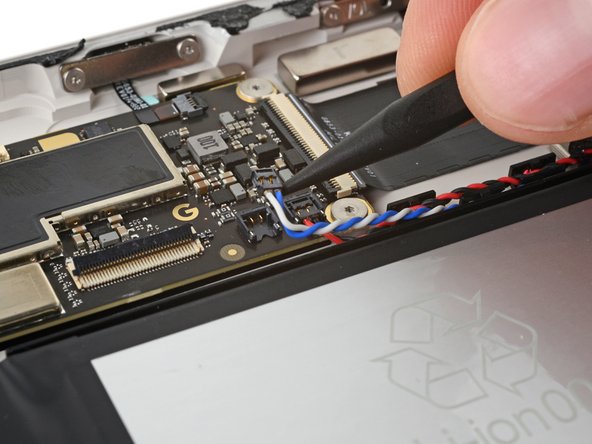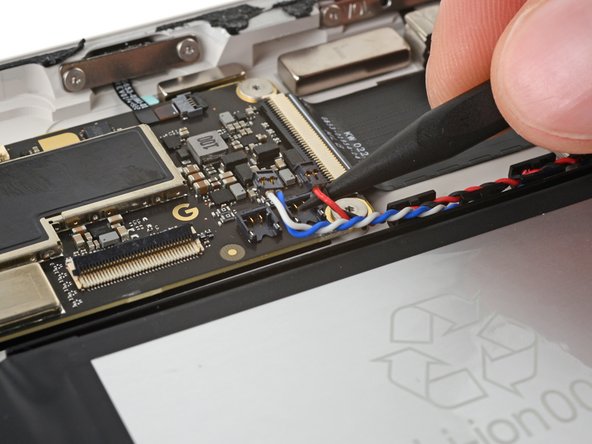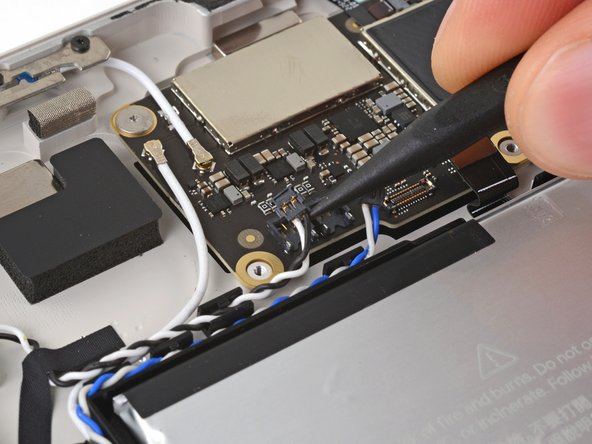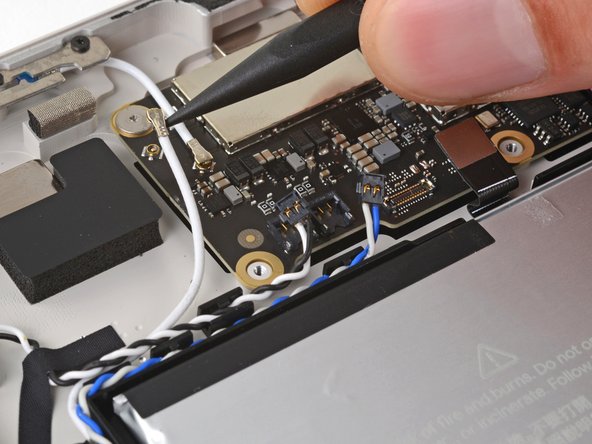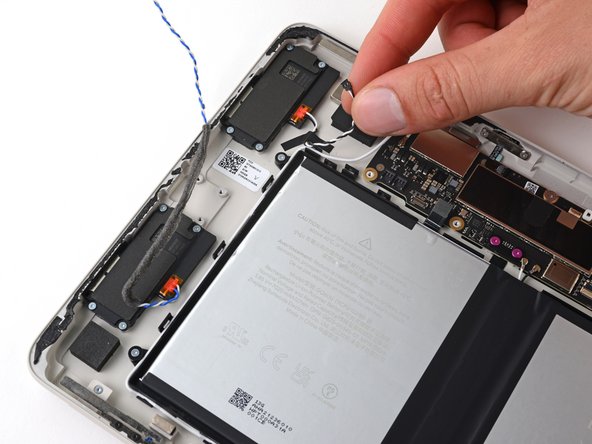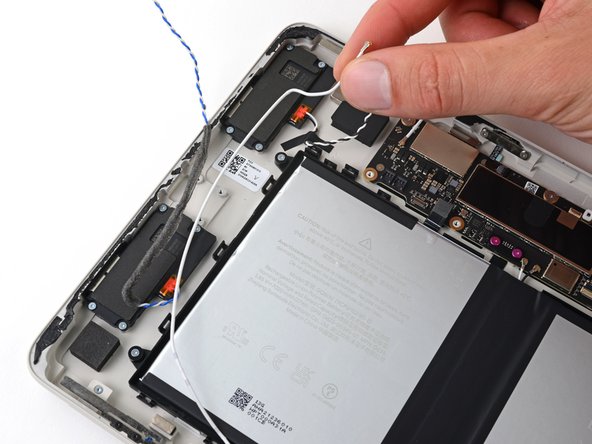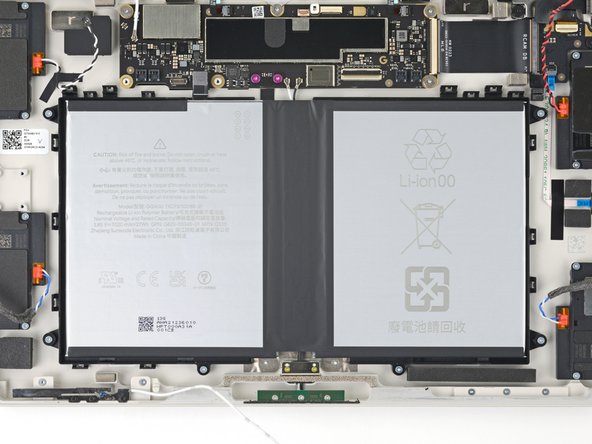Google Pixel Tablet Battery Replacement
Duration: 45 minutes
Steps: 41 Steps
This repair guide has been crafted with care to help you tackle your tech troubles. For more details on our repair guides, check out schedule a repair.
Time to give your tablet a battery boost! If it’s struggling to hold a charge or shutting down when it shouldn’t, swapping out the battery might be just what it needs. Lithium-ion batteries don’t last forever, and sometimes they puff up like a balloon—if yours is looking suspiciously swollen, take the necessary precautions before diving in. To seal the deal (literally), grab some thin, double-sided tape like Tesa 61395 Tape to reattach the screen and finish up the job.
Step 1
Let that battery run down to zero before diving into this repair adventure! A charged battery can be a bit of a fire hazard if things go haywire.
Press and hold the power button along with the volume up button to pop up that handy power off menu.
– Disconnect all the cables from your tablet and power it down completely. Let’s get that device ready for some serious TLC!
Step 2
– If your screen is sporting some serious cracks, grab some packing tape and lay down overlapping strips over the glass. This will keep you safe and make the disassembly a breeze!
Step 3
Want to know how to use the Anti-Clamp like a pro? Check out this guide for all the details you need. It’s got you covered!
– The next few steps will introduce you to the Anti-Clamp, our nifty little gadget designed to make opening your device a breeze. If you’re not rolling with the Anti-Clamp, just skip ahead three steps for a different approach.
– Give that blue handle a tug back to unlock the arms of the Anti-Clamp.
– Slide those arms over the top left corner, ensuring one suction cup is snug on the back cover and the other on the screen.
– Pop something underneath your tablet so it sits nice and level between the Anti-Clamp’s arms.
– Now, squeeze those cups together to create some solid suction!
Step 4
– Give that blue handle a little tug forward to lock those arms in place.
– Now, twist the handle clockwise a couple of times—two full turns should do the trick—until you see those suction cups starting to stretch out.
– As those cups stretch, keep an eye on their alignment. If they’re wobbling around, no worries! Just take off the Anti-Clamp and slap on some tape to help those cups stick like they mean it.
Step 5
Watch out for the heat! Your tablet’s screen and battery aren’t fans of high temperatures, so let’s keep things cool to avoid damage.
– Grab a hair dryer or heat gun and give some love to the top left corner of the screen until you see a little gap between the glass and the frame forming. It’s like magic!
– Once you’ve got that gap, slide in an opening pick like a pro.
– Now, it’s time to say goodbye to the Anti-Clamp! Just use those pull tabs on the suction cups and lift it right off.
Tools Used
Step 6
Already popped in an opening pick with that nifty Anti-Clamp? Just skip ahead two steps, and you’re golden!
Feel free to bring out the hair dryer, heat gun, or hot plate if you need a little warmth, but keep an eye on things—no overheating the screen or battery! Just warm it up until it feels cozy to the touch.
– Twist that tablet around so the front camera is facing you, like it’s ready for a selfie.
– Grab your trusty iOpener and give the top left corner of the screen (which is now your bottom right, thanks to the flip) a warm hug for three minutes.
Tools Used
Step 7
– First, attach a suction handle to the top left corner of the screen – right up against the top edge.
– Next, pull up on the handle with a firm, steady pull until you see the glass start to separate from the frame – that’s when the magic happens.
– Now, slip the tip of an opening pick into the gap you just created.
– Finally, you can remove the suction handle.
Tools Used
Step 8
The screen is held in place with a sticky adhesive all around the edges. Keep an eye on these areas as you peel away the adhesive:
– The adhesive sticks strongest along the top, bottom, and left edges, so be ready for a little workout there.
– The right edge is a bit more laid-back with slightly thinner adhesive, making it easier to tackle.
– At the top near the front camera, the adhesive goes on a diet and becomes quite thin, plus you’ve got delicate cables connecting the screen to the frame. Handle with care!
Step 9
Keep your pick’s depth in check—don’t go deeper than 7 mm, which is about halfway between the tip of the pick and the Salvation Repair logo. Let’s keep it safe and sound!
– Gently slide your trusty opening pick into the top left corner of the tablet.
– Keep that pick in place to stop the adhesive from sticking back together!
Step 10
Feel free to grab a hair dryer, heat gun, or hot plate to help out, but keep an eye on the heat! We don’t want to fry your screen or battery.
– Warm up that iOpener and give it a cozy two-minute hug against the left edge of the screen!
Tools Used
Step 11
Keep your pick from diving deeper than 7 mm—think of it as halfway between the tip of the pick and the Salvation Repair logo. We want to keep things safe and sound!
– Pop a second opening pick into the top left corner of the screen.
– Gently glide your pick down to the bottom left corner to break the left edge adhesive free.
– Keep this pick in place to stop that adhesive from getting all clingy again.
Step 12
Feel free to grab a hair dryer, heat gun, or hot plate if you’re feeling adventurous, but watch out for overheating that screen or battery! Keep it cool, and let’s get this repair done right!
– Heat up your trusty iOpener and give it a cozy two-minute hug at the bottom edge of the screen. It’s like a warm embrace for your device!
Tools Used
Step 13
Hey there! Just a friendly reminder: keep your pick no deeper than 7 mm, which is about halfway between the tip of the pick and that cool logo. Let’s keep everything safe and sound while we work on this repair!
If your pick gets a little too cozy, just give it a twist while sliding to break that adhesive’s grip. You’re doing great!
– Pop a third opening pick into the bottom left corner.
– Gently slide your pick over to the bottom right corner to break the bottom edge adhesive loose.
– Leave the pick in place to keep the adhesive from sticking back together.
Step 14
When heat is needed, a hair dryer or heat gun can be used, just be cautious not to overheat the screen or battery, as that could cause more harm than good.
– Warm up your trusty iOpener and give it a cozy two-minute hug on the right edge of the screen.
Tools Used
Step 15
Be careful not to insert your pick more than 5 mm along the right edge. Keep it shallow!
For a fun visual guide, grab your pick and measure out 5 mm from the tip, then go ahead and mark that spot with a permanent marker. You’ve got this!
– Pop a fourth opening pick into the bottom right corner like you’re a seasoned pro.
– Slide that pick smoothly up to the top right corner to break free the right edge adhesive.
– Keep this pick in place to stop that pesky adhesive from sealing up again.
Step 16
Feel free to grab a hair dryer, heat gun, or hot plate for some extra warmth, but keep an eye on that screen and battery—nobody wants a meltdown!
– Warm things up a bit! Grab that heated iOpener and let it hang out on the top edge of the screen for a cozy two minutes. You’re doing great!
Tools Used
Step 17
The front camera and sensor are right at the center of the top edge. Take it easy and avoid pushing your opening pick deeper than 3 mm (1/8 in) here—no need to go digging for buried treasure!
For a visual touch, go ahead and measure about 3 mm from the tip and give your pick a stylish mark with a permanent marker.
– To help you steer clear of slicing too deep, grab a 6.3 cm (2.5 in) piece of masking tape and stick it right on the top edge, centered over that front camera. It’s a nifty little trick to keep your cutting precise and your device safe!
Step 18
– Let’s get that fifth opening pick into the top right corner of your screen like it’s a VIP!
– Now slide your pick toward the front camera, and stop when you’re 3 cm (1.25 in) away from it. You’re doing great!
– Gently pull your pick out to about 3 mm (1/8 inch) and slide it past the front camera. Keep it smooth!
– Once your pick is 3 cm past the front camera, go ahead and insert it up to 6 mm deep. Aim for about halfway between the tip and the Salvation Repair logo. Then, slide that pick over to the first one you placed in the top left corner. You’re almost there!
Step 19
Keep that screen angle under 90 degrees, folks! Those front camera and sensor cables are on a tight leash and could snap if you push it too far.
If the screen is feeling a bit stubborn, take a look around the edges for any bits of adhesive that might have slipped through the cracks. Use your trusty opening pick to slice through them and free the screen!
– Gently grab and lift those bottom corners of the screen like you’re peeling a banana.
– Tilt the screen open just enough to peek at the cables connecting it to the frame—like a little surprise waiting for you!
– When it’s time to put everything back together, remember to peel off the adhesive liners from the edges of the screen before giving it a good press into the frame. You got this!
Step 20
If you’re having trouble keeping the screen up, try propping it on the tablet’s dock for a little support, or ask a friend to lend a hand while you get the job done.
– For the next three steps, keep that screen tilted open with one hand like a pro, while your other hand does the magic.
– Grab those tweezers and gently peel away the black tape from the screen cable connector. It’s like unwrapping a present, but less exciting!
– Now, onto reassembly:
– If the old tape is looking worse for wear, pop in some fresh tape from your repair kit. Your device deserves the best!
– Before sealing everything up, let’s give your tablet a quick test drive. Power it on and make sure it’s functioning like a champ. Then power it back down before diving back into reassembly.
Tools Used
Step 21
– Grab a spudger or your trusty fingernail and gently lift the tiny locking flap located on the inner edge (the same side as the cable) of the screen cable ZIF connector.
– Next, with some finesse, use tweezers or your fingers to carefully pull the screen cable straight out from its socket.
Step 22
– Grab your trusty opening pick and gently flip up that small locking flap on the outside edge (the one opposite the cable) of the front camera ZIF connector. You’ve got this!
– With a steady hand, use your tweezers to pull the cable straight out of its cozy socket. Easy peasy!
– When you’re putting everything back together, watch out for that cable—it’s a little shy and doesn’t like to bend too much. Use those tweezers to guide the connector into its socket while locking that ZIF connector flap securely at the same time. You’ve got the magic touch!
Tools Used
Step 24
– Detach the screen with care.
Step 25
If you’re giving your screen a second chance, be sure to clear away the old adhesive from both the screen and the frame. It’s like spring cleaning for your device!
– Let’s get started on cleaning up that frame and prepping it for reassembly – just two more steps to go!
– Use the flat end of your trusty spudger or a clean fingernail to carefully scrape up an edge of the leftover frame adhesive until you can get a good grip on it.
– Next, grab some tweezers or your fingers and start peeling off those large pieces of adhesive from the frame. It’s like removing stickers – but less fun, unfortunately!
– Keep working your way around the entire perimeter of the frame, scraping and peeling until there are no more large pieces of adhesive left. You’re making great progress!
Step 26
Getting your screen ready for action? Don’t forget to give its edges and the frame a little TLC. A quick clean goes a long way!
– Grab a pipette or syringe and fill it up with some super-concentrated isopropyl alcohol (90% or more). Now, let those few drops fall onto the edge of the frame like a pro.
– Take a microfiber or lint-free cloth, wrap it around the flat end of your spudger, and give that frame a gentle scrub until it shines! Feel free to add more isopropyl alcohol as needed for that extra sparkle.
Tools Used
Step 27
The Pixel Tablet loves its Torx Plus screws, but don’t sweat it—standard Torx bits can do the job too! Just remember to keep that steady downward pressure to avoid stripping those screws.
For standard Torx bits, reach for a T3 Torx for the best fit. If it feels a bit wobbly, a T4 Torx bit might just be the hero you need!
– Grab your trusty Torx Plus 3IP driver and take off those two 2.6 mm screws holding down the cover for the battery, USB-C, and speakers connectors. You’ve got this!
– Now, go ahead and lift off that cover like a pro.
Step 28
To reconnect a press connector, line it up with its socket and give one side a gentle push until you hear that satisfying click. Then, it’s time to press down on the other side—easy peasy!
– Grab the flat end of your trusty spudger and gently wiggle it in to lift up and disconnect that battery press connector. You’ve got this!
Tools Used
Step 29
Connecting the screen cable while the battery is still plugged in can cause a short circuit and might even lead to a fire hazard. Play it safe and make sure everything is disconnected before you proceed!
– Time to wrap up! Follow these steps to safely reconnect the screen and battery during reassembly.
– Set the bottom edge of your tablet on a box or something similar. Tilt the screen back and rest it at a 90-degree angle, like it’s about to give a presentation.
– Reconnect the small front sensor cable ZIF connector – be gentle, it’s a little delicate!
– Now, plug in the big screen cable ZIF connector. Make sure it’s snug and secure.
– Reconnect the battery press connector. Everything’s coming together!
– Grab your trusty Torx Plus 3IP driver and use it to install the two 2.6mm screws, fastening the connector cover. Almost there!
– You’re cruising through! Keep going with the cables connected and ready for the next step.
Step 30
– Grab your trusty spudger and gently lift up the USB-C port press connector like you’re peeling a banana. Disconnect it with a little finesse and you’ll be one step closer to your repair victory!
Tools Used
Step 31
Handle that battery with care—your tool is not its best friend!
– Time to get crafty! Grab those blunt nose tweezers or just use your fingers to gently peel off the three strips of tape holding the USB-C port cable snug against the battery.
– When you’re putting things back together, if those tape strips are still looking good, go ahead and reuse them! If not, no worries—just cut a few thin strips of electrical tape and stick that cable back onto the battery like a pro.
Tools Used
Step 32
– Grab your trusty Torx Plus 3IP driver and use it to remove the four 3.2 mm screws that are holding the USB-C port in place.
Step 33
– Gently coax the USB-C port out of its snug little home in the frame and bid it farewell as you remove it.
Step 34
Gently lift straight up on the neck of the cables, getting as close to the connector head as you can.
– Grab your trusty spudger and gently lift the blue and white speaker cable connector off the right side of the logic board. You’ve got this!
– Now, let’s give the red and black speaker cable connector a little nudge to disconnect it. Easy peasy!
Tools Used
Step 35
– Gently slide the blue and white speaker cables out from their cozy clips that line the top and right side of the battery tray.
– Carefully detach the red and black speaker cables from their clips resting along the top of the battery tray.
Step 36
Gently lift straight up on the neck of the cables, getting as close to the connector head as you can. You’ve got this!
– Grab your trusty spudger and carefully lift up the blue and white speaker cable connector from the left side of the logic board—it’s playing hard to get, but you’ve got this!
– Next up, disconnect the black and white speaker cable connector. You’re just one step closer to victory!
– Now for the left antenna connector: gently pry the metal neck of the cable straight up to disconnect it from the logic board. You’re almost through the maze!
Tools Used
Step 37
– Gently pull out the speaker cables and antenna cable from the clips that hold them in place along the battery tray.
Step 38
– Grab your Torx Plus 2IP driver and let’s get to work! Remove those six 2.8 mm screws holding the battery tray in place. You’ve got this!
Step 39
Leave the battery cells snug in their black tray home – no need to try to remove them!
Six strips of stretch-release adhesive are placed beneath the battery tray, keeping it snugly attached to the frame.
– Grab your trusty tweezers and gently lift back those six white pull-tabs on the battery tray’s stretch-release adhesive strips. You’ve got this!
Tools Used
Step 40
If you’ve had a few strips go AWOL and they just won’t come back, here’s a little tip: Gently pull the adhesive strip at the lowest angle possible. Aim to keep it from scraping against the components nestled inside the frame. Be a hero, not a dragger!
– Grab that adhesive strip’s pull tab and gently pull it out from under the battery tray. Take it slow; we want to keep everything intact!
– Keep pulling that adhesive strip until it’s fully released from the battery tray. Give it some time to stretch out and do its thing.
– Repeat the process for all six adhesive strips. You’re doing great!
– Now, take your trusty spudger and give a little push to the foam piece near the lower right strip while you pull. Teamwork makes the dream work!
– Using a pipette or syringe, drop a few drops of super-concentrated isopropyl alcohol (over 90%) where the battery tray’s adhesive strips have given up the ghost. Tilt that tablet to help the alcohol slide underneath.
– Wait a couple of minutes for the magic to happen, then grab your spudger and gently pry up the battery tray. You’re almost there!
Tools Used
Step 41
A damaged or deformed battery is a no-go. Using one could cause serious safety issues. Play it safe and swap it out!
– When piecing your device back together, just follow these steps in reverse—easy peasy!
– Get the best out of your new battery by calibrating it right after finishing up here.
– Don’t toss that old stuff! Drop off your e-waste at an R2 or e-Stewards certified recycler to give it a proper goodbye.
– If things didn’t go as planned, don’t sweat it! Try some basic troubleshooting or tap into our Answers community for help.
– Need a hand? You can always schedule a repair.
